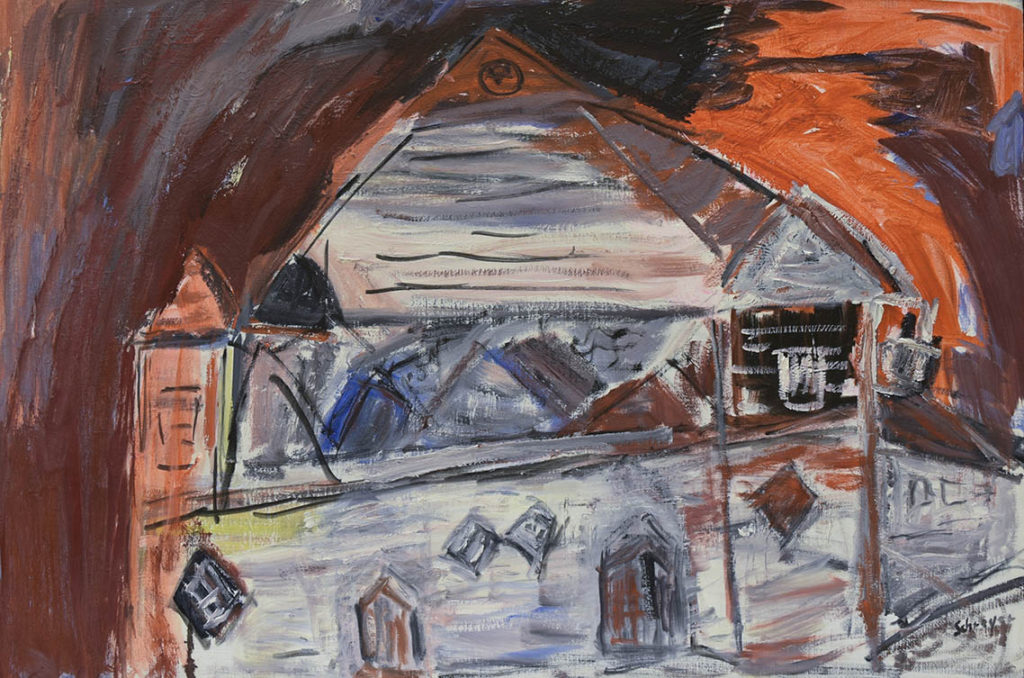Burning Synagogue 4—Piaski, Poland
Greta Schreyer (Vienna 1917-New York City 2005)
Oil on canvas, h. 24 x w. 30 in.
USA, 1999
Cincinnati Skirball Museum, gift of Linda Schreyer, 2016.1.2
Greta Schreyer was born in Vienna, Austria, the daughter of a master goldsmith. She too became a master goldsmith and studied art in Vienna and Paris before immigrating to the United States in 1938. In New York, she studied at the New School, The Art Students League, and at Pratt Institute. A prolific artist, she worked in oil, watercolor, and lithography. Near the end of her life, she painted a series of burning wooden synagogues, commemorating the distinctive massive synagogues of 18th-century Poland, destroyed by the Nazis during the Second World War.
In 1921, 2,674 Jews lived in Piaski, Poland, representing sixty-seven percent of the village’s population. The Jews of the town were religious and traditional, and they lived as tradesmen and craftsmen. The village had a few Jewish houses of prayer, two Jewish cemeteries, and two Jewish public libraries. The Piaski Synagogue towered over the wooden houses of the community and was burned down by the Nazis during the invasion in 1940. Piaski was the first ghetto of Poland established by the Nazis in the spring of that year. From there, Jews were transported to the death camps of Belzec and Sobibor. By 1942, the remaining Jews in the Piaski ghetto were shot to death at the local Jewish cemetery. In Greta Schreyer’s interpretation, the massive roof of the Piaski synagogue seems to shudder under the assault of red-hot flames. The stable construction of the building is fractured in Schreyer’s expressive hands, as windows and doors are displaced at odd angles, seemingly at risk of tumbling down and being crushed by the huge roof.

